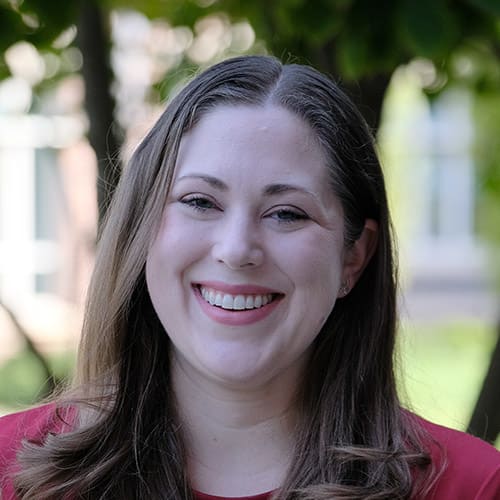
Guide to Advance Directives and Living Wills

Advance directives, living wills, and other complementary medical order documents allow your loved one to make their health care wishes known in writing. Creating these forms empowers your loved one to experience health care and end-of-life care on their own terms. With these documents, they can have peace of mind knowing that their wishes will be carried out by medical professionals if they are unable to speak or clearly communicate their preferences. Cleveland Clinic Center for Geriatric Medicine Section Chief Dr. Ardeshir Hashmi offers a medical viewpoint on how you can encourage your loved one to address these important end-of-life decisions.
Let our care assessment guide you
Our free tool provides options, advice, and next steps based on your unique situation.
Help your loved one be prepared with key documents
Start a conversation about advance directives
Our step-by-step advice can prepare you to navigate these discussions with empathy.
Download our advance directives conversation guide >
As they age, your loved one can become more prone to hospitalization and emergency room visits. You want them to be prepared for any scenario, and this can be especially concerning if they reside in a senior living community, where they spend a majority of their time outside the company of those who know them best. An advance directive, living will, and other accompanying documents assist caregivers with knowing and following the wishes of your loved one throughout the aging process and provide important parts of the blueprint for care coordination.
“Life happens suddenly, and so, what happens in an emergency?” says Hashmi. “Who is your backup if I couldn’t have this conversation with you?”
A good place to begin is by helping your loved one compile a comprehensive advanced-planning resources enclosed (CARE) folder, which contains documents, such as an advance directive, expressing their health care preferences. These documents relieve family members of the emotional and mental stress of having to speculate or argue about what a loved one would have wanted. It can promote unity and help minimize disagreements among family members, because the person clearly stated their preferences in the advance directive.
Types of advance directive
What is an advance directive? Simply put, it is an advance care planning document which expresses your loved one’s health and medical treatment opinions and preferences.
A durable power of attorney for health care and a living will are the two types of advance directives. However, complementary medical orders, such as a Do-Not-Resuscitate Order (DNR), Physician Orders for Life-Sustaining Treatment (POLST), and Medical Orders for Life-Sustaining Treatment (MOLST) can also help identify your loved one’s wishes.
Hashmi notes that both medical professionals and patients should be bringing up advance directives at their appointments to make sure the patient has the documents they wish to have on file. If you accompany your loved ones to medical appointments, you could remind your loved one to ask about the advance directives and medical orders in their charts.
Durable power of attorney for health care
The durable power of attorney for health care enables a named agent of your loved one’s choice to make health care decisions for them should they become incapacitated.
Regardless of health status, this is an essential document for any adult to have in their CARE folder. Your loved one may choose to have an attorney assist them with drafting a durable power of attorney for health care. However, this is typically not needed. Online services may also offer ways to create this advance care planning document.
A durable power of attorney for health care may have different names in different states. These include the following:
- Health care proxy
- Medical power of attorney
- Health care power of attorney
- Health care surrogate
In the event that your loved one becomes incapacitated and cannot make medical decisions for themselves, the medical care team will follow the decisions made by their health care agent.
Living will
Many people may be unfamiliar with what a living will is and how it works. A living will dictates which treatments your loved one wishes to receive, or wishes to refuse, during a life-threatening or end-of-life event.
Hashmi advises that the living will should formally outline what your loved one does not want medical providers to do to them or for them, and he notes that these wishes may be influenced by your loved one’s cultural or religious beliefs as well as their current health status. He describes these preferences as being essential for a clinician to better serve a patient.
Your loved one can choose to dictate directions in a living will for health care treatment options including, but not limited to:
- Artificial hydration
- Blood transfusions
- Dialysis
- Feeding tubes
- Intubation and ventilation
- Life support
- Organ donation wishes upon death
- Palliative care and pain medication
Every adult should have a living will. Though an attorney can assist your loved one with drafting a living will, an individual may also be able to draft a living will through the resources available through their medical provider, their state health department, and other senior services in their area.
Drafting a living will remains a relatively simple process in most states, and your loved one can have both a living will and a durable power of attorney for health care at the same time. There is no requirement dictating that a person can only have one of these documents.
With no comprehensive federal standard, each state determines what a living will may be called and what it comprises. A living will may be referred to by the following names:
- Health care directive
- Medical directive
- Health care declaration
POLST/MOLST
Physician Orders for Life-Sustaining Treatment (POLST) and Medical Orders for Life-Sustaining Treatment (MOLST) forms offer additional directions when it comes to a person’s medical care.
These forms essentially build upon what is already in an advance directive — an advance directive tends to be more general, while a POLST or MOLST provides more specific care guidance. This type of form makes the most sense for a person experiencing a serious, ongoing illness or disease that would need to be addressed in an emergency situation. Your loved one’s doctor or another medical care provider usually helps them fill out this kind of form.
Some hospitals and senior living communities may require one of these forms at intake. This may be a standardized state form or an end-of-life organization’s form, or it may be a form drafted by the hospital or senior living community.
The names given to this type of health care document vary widely by state. For example, North Carolina refers to it as Medical Orders for Scope of Treatment (MOST), while Louisiana calls it Louisiana Physician Order for Scope of Treatment (LaPOST).
A prominent organization, also known by the acronym POLST, has pioneered a concept for a more universal standard among the states. As of 2021, more than 40 states have some version of POLST in usage or have adapted POLST practices, while six states utilize a type of MOLST. For instance, California participates in POLST and uses a form labeled the California POLST for its citizens, while New York offers a Department of Health MOLST form to its residents.
DNR
A DNR, or Do-Not-Resuscitate Order, offers a patient a way to decline specific life-saving measures, such as cardiopulmonary resuscitation (CPR). Typically, a DNR remains most applicable for those with a known, severe illness.
To obtain a DNR, your loved one will need to speak to their doctor or medical provider to complete necessary paperwork, at which time the request should also be added to their patient chart. It is a good idea to keep a copy in your loved one’s CARE folder, as well.

Let our care assessment guide you
Our free tool provides options, advice, and next steps based on your unique situation.
How are advance directives and medical orders used in an emergency?
It’s best to think about these emergency and end-of-life planning materials by envisioning a real-world scenario. If your loved one suffers a severe stroke at home, becomes incapacitated, and cannot communicate, you or another caregiver would call 911 for help. Emergency personnel would arrive to treat your loved one and transport them to the hospital.
With the first responders
Each state dictates what documents first responders can and should follow on-scene. If your loved one has a POLST, a MOLST, or a similar medical order document, it’s possible that first responders can use it when treating them. However, the medical order must be presented to the first responders on the scene. Without a medical order present, first responders are required by most state laws to use their own judgment in determining the best course of action in treating your loved one.
In the case of a DNR, some states require that a valid and visible instance of the DNR accompany your loved one. Otherwise, first responders may not be able to follow its guidelines. Your loved one may also choose to wear a DNR medical alert jewelry item or utilize an informational wallet card to bring first responders’ attention to their DNR status. If your loved one stops breathing on the way to the hospital, the emergency responders may try any available methods to revive them in the absence of a DNR to meet state-specific guidelines.
At the hospital
Once at the emergency room, staff typically stabilize and assess the patient prior to inquiring about advance directives. The emergency room medical professionals evaluate whether your loved one can make their own medical decisions and also determine whether there is a durable medical power of attorney in place. If your loved one has a durable medical power of attorney for health care, the named agent springs into action only if your loved one cannot make decisions or speak for themselves while at the hospital. This agent can communicate with your loved one’s medical team, caregivers, and others, and they can make medical decisions on their behalf.
As a practical matter, medical professionals have to be informed of any advance directives in order for the advance directives to be followed. As a caregiver, you can present them with the CARE folder and share copies of these documents if they are not already in your loved one’s chart.
When your loved one regains the ability to communicate, they will be able to make their own medical decisions again.
What happens if someone does not have an advance directive?
If your loved one becomes incapacitated and cannot express their wishes, medical professionals typically follow the best practices they deem necessary in the absence of an advance directive. Without knowing the patient’s preferences, however, the care team may be implementing treatments that conflict with the person’s wishes, values, or cultural or religious beliefs. For example, a patient may not have wanted to be on life support or a ventilator for weeks or months on end, but the care team and the family may believe it is the best course of action.
“The dignity of human life gets robbed very quickly,” Hashmi says. “And it’s not because anyone is trying to do that, right? Everyone is very well-intentioned — the medical team, the family, etc. — but in the absence of those very clearly defined wishes, it sort of reduces that life to just technically being alive, but without meaningfully being able to engage with the world around them.”
What is the Patient Self-Determination Act and how does it affect advance directives?
As part of federal law, the 1990 Patient Self-Determination Act sets the requirements for how all American hospitals, skilled nursing facilities, home health agencies, and health maintenance organizations (HMOs) handle a patient’s advance directives. While this legislation was intended to encourage citizens to create advance directives, it ultimately guides these institutions’ practices when it comes to implementing them.
These organizations must provide their patients with relevant information on state laws, ask patients periodically if they have a current advance directive, and honor patient wishes on recognized advance directive forms. It is important to note that this legislation also ensures that these institutions cannot discriminate against patients at the time of treatment based on the presence of an advance directive.
Frequently asked questions regarding end-of-life planning
Can someone craft an advance directive if they are mentally incapacitated or mentally incompetent?
Only mentally competent individuals can craft an advance directive. This remains a major factor in why experts encourage a person to create an advance directive before they become ill or experience a serious injury.
In the scenario of a loved one being unable to make health care decisions on their own and not having a designated health care power of attorney, families may be forced to go through a legal process to gain guardianship or conservatorship over a loved one. With the assistance of an attorney and a physician, the family typically needs to prove that the loved one has diminished capabilities and can no longer manage their personal affairs. Hashmi advises that a physician typically provides a Statement of Expert Evaluation as part of this process. Establishing guardianship can be difficult, expensive, and time-consuming, which is why building a CARE folder should be a high priority for your loved one.
Hashmi emphasizes that advance directives remain especially important for those who do not have a spouse, significant other, or children. Without advance directives, a court may appoint a guardian for someone who is cognitively or physically unable to engage in their own care and does not have next of kin.
Can my loved one move to a new state and keep using their current advance directive?
Each state decides what is legally allowable when it comes to advance directives. Your loved one should consult with applicable hospitals, senior living communities, home health agencies, or health maintenance organizations in the new state about their existing advance directives. Then, your loved one should consider consulting with an elder law attorney in the new state to learn about that state’s specific requirements and if new advance directives need crafted to be compliant with the new state’s laws.
Similarly, if your loved one plans to travel regularly to another state or lives as a snowbird during part of the year, they may need to consult with an attorney regarding the forms they need for each state.
How can my loved one’s medical care team help with advance directives?
Hashmi notes that he sees himself as a clinician as well as an advocate for his patients. He explains that he ensures that a patient’s advance directives and medical orders remain current in their charts. When a patient is in the ICU or emergency room, Hashmi advises that his team proactively makes contact with the care team in those locations to make sure they are aware of the patient’s advance directives.
Encourage your loved one to ask their medical providers how they will store the patient’s advance directives and medical orders. They can also inquire about how their care team approaches emergency and end-of-life situations for patients with advance directives and medical orders.
Where should my loved one store their CARE folder?
Your loved one should store any advance directive or medical order documents in a CARE folder that is easy to access. Avoid locking it into a safe or another hard-to-access location. For example, they can place the documents in a brightly colored folder, labeled in a large font with the document names or acronyms on the front, near the refrigerator or another high-traffic area in their living space.
You want your loved one’s CARE folder to be discoverable. Unlike other important documents, there is an advantage in having these be found, and found quickly. First responders and medical professionals can’t follow advance directives or medical orders if they don’t know they exist. You should also encourage your loved one to have their advance directives and medical orders on their patient charts, however, medical orders on charts are not accessible to first responders.
It may be a good idea to have your loved one use a medical alert jewelry item or informational wallet card to indicate the documents they have in their CARE folder. The wallet card is also helpful if your loved one comes into an emergency room while incapacitated and without you or another caregiver nearby. Hospital staff are likely to find the wallet card when searching a wallet for identification cards.
Your loved one should also consider distributing multiple copies of their CARE folder to family members, caregivers, and anyone else they want to be informed about their medical wishes.
Does an advance directive affect my loved one’s access to legal aid-in-dying or right-to-die procedures?

Talk with a Senior Living Advisor
Our advisors help 300,000 families each year find the right senior care for their loved ones.
As of 2021, a handful of states have aid-in-dying laws, right-to-die laws, or court rulings that allow physicians to assist terminally ill patients in ending their lives. These laws and judicial precedents are relatively new, so the legal implications remain somewhat unclear. A local attorney may be able to provide specific guidance to fit your loved one’s situation.
Why does talking about end-of-life care feel so challenging?
While you understand it’s important to talk with your loved one about end-of-life options, it remains difficult as a caregiver or family member to discuss this often taboo subject.
“No surprise, human beings don’t like to talk about death and dying,” Hashmi says. “It’s not a really popular topic.”
It’s normal to feel death anxiety or experience anticipatory grief when talking about end-of-life options with your loved one. Helping them through an end-of-life experience exposes you to your own mortality, perhaps for the first time. The more families openly discuss death and dying, the more normalized these subjects can become for everyone.
Education and preparation can help lessen fear and anxiety surrounding death. Ignoring uncomfortable end-of-life topics with your loved one doesn’t stop death from happening to them. Death is a part of life — it will happen to all of us.
By talking about advance directives now, you are giving your loved one the space to navigate this part of their life’s journey with grace, dignity, and respect. Your loved one needs you to hear them. Be open to listening. Follow the information outlined in this advanced care directive guide to help make the process easier.
A Place for Mom and Cleveland Clinic: Supporting seniors and their families
This article was developed in conversation with Ardeshir Hashmi, MD, section chief of the Cleveland Clinic’s Center for Geriatric Medicine, as part of a series of articles featuring expert advice from Cleveland Clinic geriatricians.
Sources
AgeWise Colorado. “Getting the Jump on Estate Planning.”
The American Academy of Family Physicians. “Advance Directives and Do Not Resuscitate Orders.”
American Cancer Society. “Advance Directives.”
Death with Dignity. “Creating Your Life File: A Checklist for End-of-Life Planning.”
Interview conducted with Hashmi, A. Cleveland Clinic. November 4, 2021.
Medicare. “Advance directives & long-term care.”
MOLST. “Medical Orders for Life-Sustaining Treatment.”
National Institute on Aging. “Advance Care Planning: Health Care Directives.”
National POLST. “Honoring the wishes of those with serious illness and frailty.”
PCHC. “End of Life Planning.”
Swanbrow, Diane. “Advance directives impact quality of end-of-life care.”
The U.S. National Library of Medicine. “Advance Directives.”
This article is intended for the caregiver’s general information and does not establish an attorney-client relationship. The content within this article is not to be considered legal advice. A Place for Mom does not in this article endorse any legal firm or make a claim to the enforceability of any document discussed here. Please consult your physician and legal professionals in your area.
Help your loved one be prepared with key documents
Senior living options in all states
The information contained on this page is for informational purposes only and is not intended to constitute medical, legal or financial advice or create a professional relationship between A Place for Mom and the reader. Always seek the advice of your health care provider, attorney or financial advisor with respect to any particular matter, and do not act or refrain from acting on the basis of anything you have read on this site. Links to third-party websites are only for the convenience of the reader; A Place for Mom does not endorse the contents of the third-party sites.
Make the best senior care decision
Make the best senior care decision